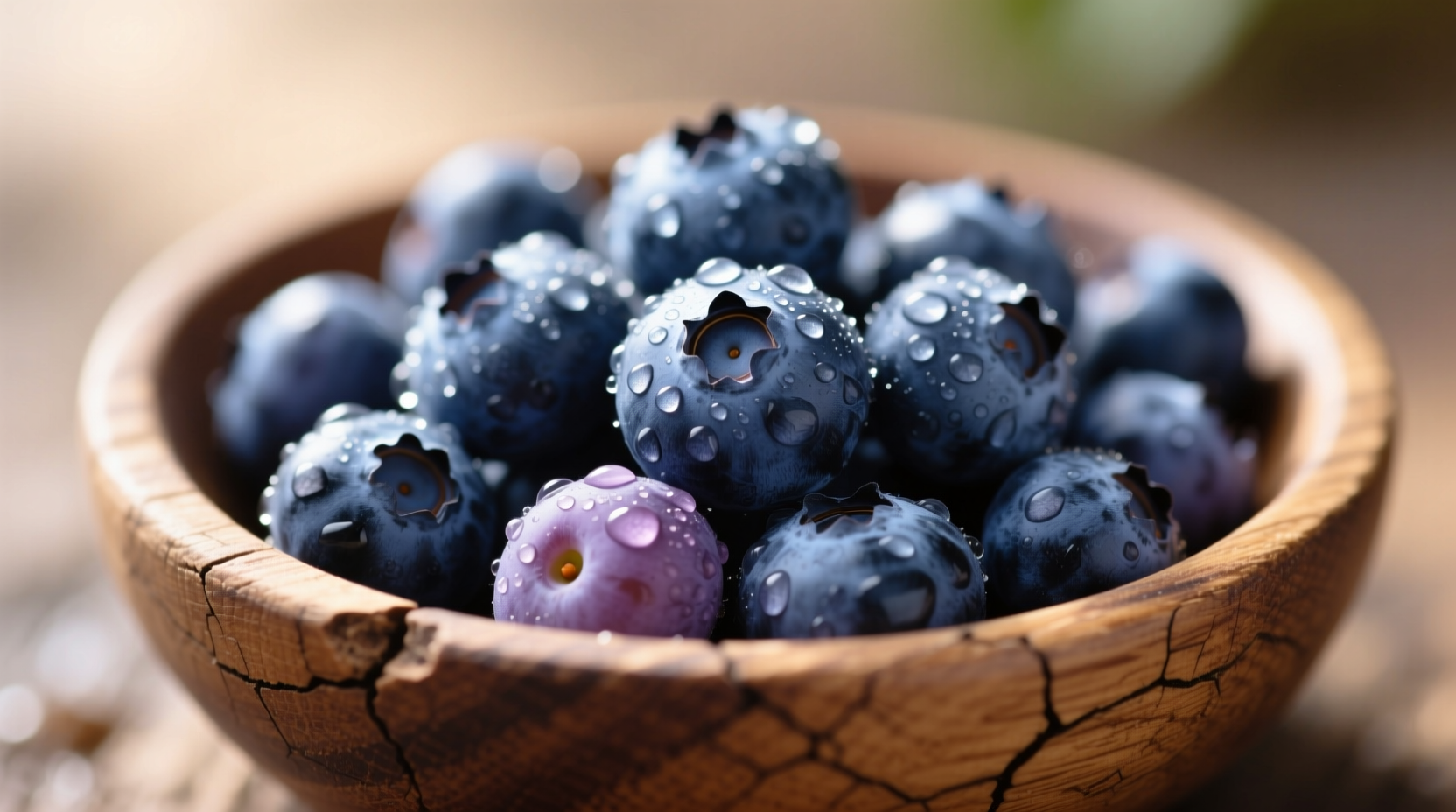Perfectly ripe blueberries deliver a balanced sweet-tart flavor with subtle earthy undertones and mild floral notes. Wild varieties taste more intense and tangy, while cultivated blueberries offer sweeter, milder profiles with less acidity. The taste experience varies significantly based on ripeness, variety, and growing conditions.
Ever wondered what makes blueberries stand out from other berries? Whether you're encountering them for the first time at the grocery store or considering them for a recipe, understanding their distinctive flavor profile helps you make the most of these nutritional powerhouses. Let's explore exactly what blueberries taste like and how various factors influence their flavor experience.
Decoding the Blueberry Flavor Profile
Blueberries offer a complex flavor experience that goes beyond simple sweetness. When perfectly ripe, they provide a harmonious balance between natural sugars and mild acidity, creating what food scientists call "sweet-tart equilibrium." This balance makes them versatile for both sweet and savory applications.
The primary taste components include:
- Sweetness: Ranging from mild to pronounced depending on variety and ripeness
- Tartness: A refreshing acidity that prevents cloying sweetness
- Earthy notes: Subtle undertones reminiscent of forest floors
- Floral hints: Delicate aromatic qualities, especially in wild varieties
Unlike strawberries with their bright, straightforward sweetness or raspberries with their pronounced tartness, blueberries occupy a middle ground that makes them remarkably adaptable in culinary applications.
How Ripeness Transforms Blueberry Flavor
The journey from unripe to perfectly ripe dramatically alters blueberry taste. Understanding this progression helps you select berries with optimal flavor:
| Ripeness Stage | Flavor Characteristics | Visual Indicators |
|---|---|---|
| Unripe | Intensely tart, almost bitter, with minimal sweetness | Pale green to red hues, firm texture |
| Perfectly Ripe | Balanced sweet-tart profile with complex flavor notes | Deep blue with silvery bloom, slightly soft |
| Overripe | Excessively sweet, fermented notes, mushy texture | Dull color, leaking juice, very soft |
This ripeness timeline directly impacts your eating experience. Underripe berries often dominate with astringent qualities that can overwhelm other flavors in recipes, while perfectly ripe specimens deliver the nuanced profile blueberry enthusiasts cherish.
Wild vs. Cultivated: A Taste Comparison
Not all blueberries taste the same. The distinction between wild and cultivated varieties creates significant flavor differences that affect culinary applications:
Wild blueberries (often called lowbush varieties) grow naturally in forested areas across North America. These smaller berries pack an intense flavor punch with higher concentrations of anthocyanins—the compounds responsible for both their deep color and distinctive tartness. According to research from the University of Minnesota Extension, wild blueberries contain up to 35% more antioxidants than cultivated varieties, contributing to their more complex flavor profile.
Cultivated blueberries (highbush varieties) have been selectively bred for size, yield, and milder flavor. While larger and juicier, they often sacrifice some of the intense flavor complexity found in wild counterparts. The USDA Agricultural Research Service notes that cultivated blueberries typically have higher sugar content but less pronounced tartness.

Seasonal Flavor Evolution
Blueberry flavor changes throughout the growing season, creating a natural timeline of taste experiences:
- Early season (June): Berries tend to be smaller with higher acidity and more intense flavor
- Mid-season (July): Peak balance of sweetness and tartness with optimal juiciness
- Late season (August): Larger berries with milder flavor and higher sugar content
This seasonal progression explains why blueberry taste can vary significantly depending on when you purchase them. Early season berries often work better in recipes requiring bold flavor, while late-season specimens shine when eaten fresh.
How Preparation Methods Alter Blueberry Flavor
The way you prepare blueberries dramatically impacts their taste experience:
- Raw consumption: Preserves delicate floral notes and fresh tartness
- Cooking: Enhances sweetness while mellowing tartness; develops deeper, jam-like flavors
- Baking: Creates complex caramelized notes when combined with sugars
- Freezing: Concentrates flavor but may soften texture; wild varieties maintain integrity better
Professional chefs often recommend adding blueberries toward the end of cooking processes to preserve their distinctive flavor profile. When making sauces or compotes, a splash of lemon juice can help maintain the crucial sweet-tart balance that defines great blueberry flavor.
Practical Tips for Maximizing Blueberry Flavor
Now that you understand blueberry taste characteristics, here's how to make the most of them:
- Selecting: Look for uniform color with a silvery bloom (natural wax coating indicating freshness)
- Storing: Keep unwashed in refrigerator crisper drawer; consume within 5-7 days for peak flavor
- Enhancing: A pinch of salt or squeeze of citrus can elevate natural flavors
- Pairing: Complements lemon, almond, cinnamon, vanilla, and creamy dairy products
For the most authentic taste experience, try sampling different varieties side by side. The USDA Food Components and Health Laboratory recommends tasting berries at room temperature to fully appreciate their nuanced flavor profile.
Common Blueberry Flavor Misconceptions
Several myths persist about blueberry taste that deserve clarification:
- "All blueberries taste the same": Over 50 cultivated varieties exist with distinct flavor profiles
- "Bitter blueberries are bad": Some varieties naturally have more pronounced tartness
- "Larger berries mean better flavor": Often the opposite—smaller berries pack more intense flavor
- "Frozen berries taste inferior": Properly frozen wild blueberries often surpass fresh out-of-season berries
Understanding these distinctions helps you select and use blueberries according to your specific flavor preferences rather than general assumptions.
Discovering Your Perfect Blueberry Experience
Blueberries offer a remarkably diverse flavor journey depending on variety, ripeness, and preparation. Whether you prefer the bold intensity of wild Maine blueberries or the milder sweetness of cultivated California varieties, there's a blueberry experience perfectly suited to your palate. By understanding what influences blueberry taste, you can make informed choices that elevate your culinary creations and eating experiences.











 浙公网安备
33010002000092号
浙公网安备
33010002000092号 浙B2-20120091-4
浙B2-20120091-4